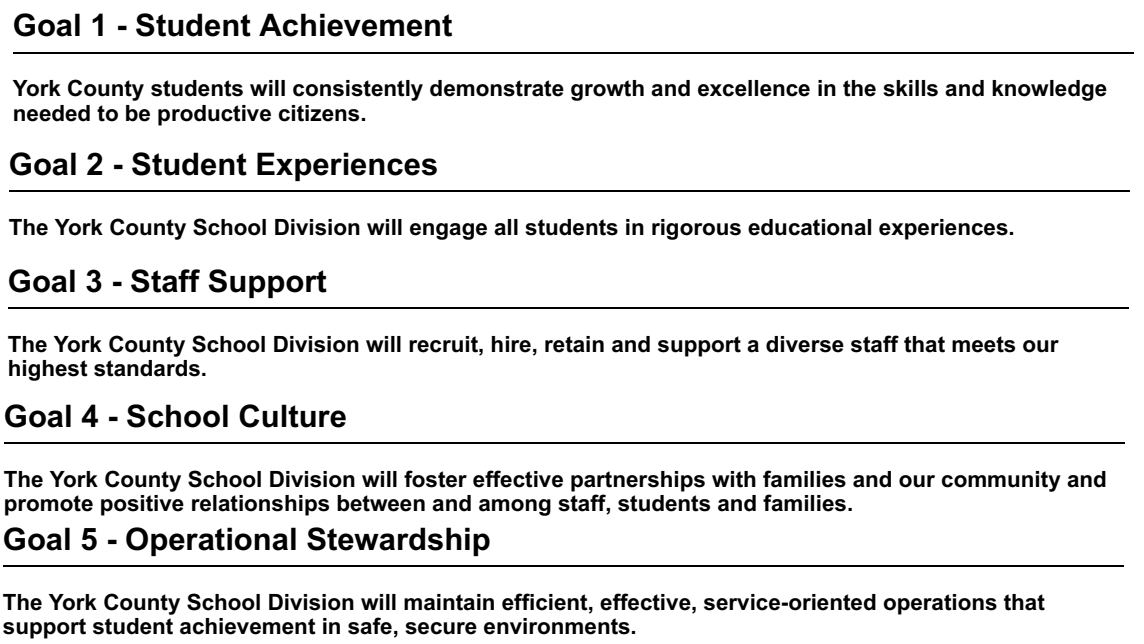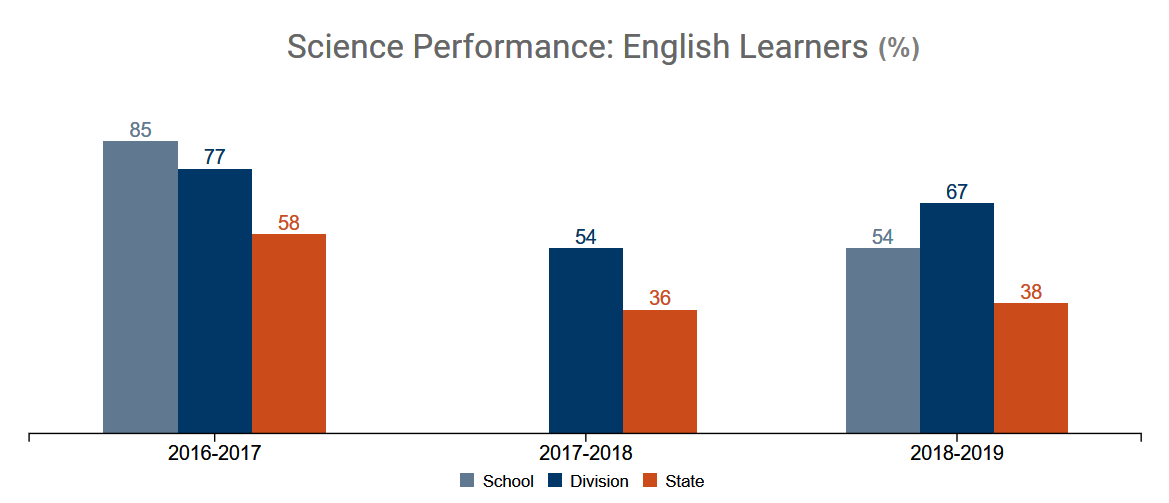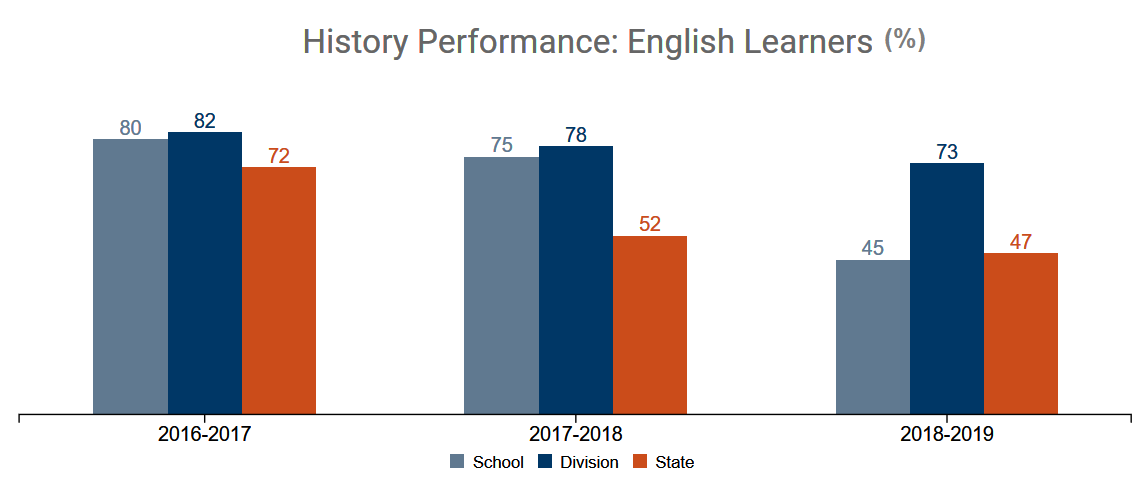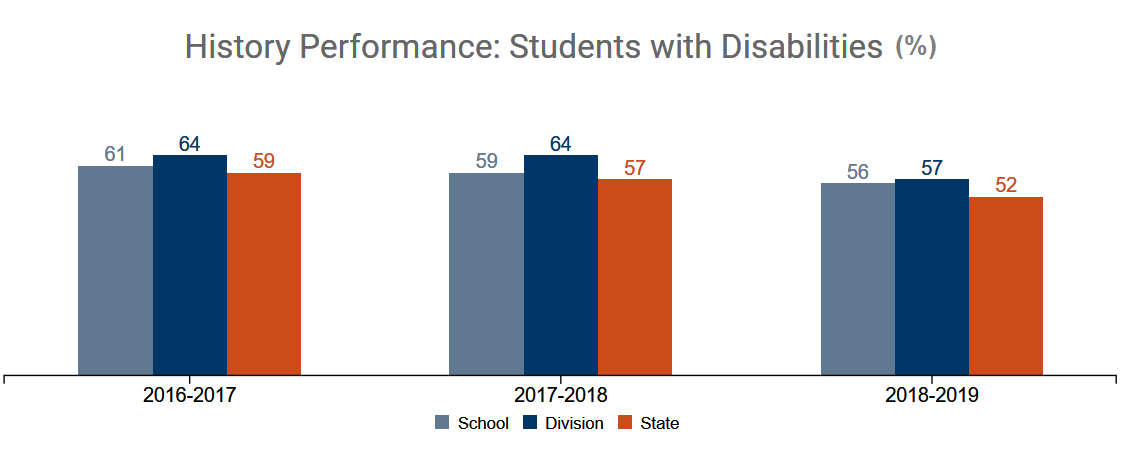Introduction
Data-based decision-making at school depends on educators’ regular collection and assessment of different types of data regarding students’ progress to conclude about their strengths and weaknesses in learning. This approach to decision-making allows for utilizing mostly credible sources of information, such as summative assessment results, to draw accurate conclusions regarding students’ achievements or barriers to learning. Additionally, data-based decision making also depends on analyzing teaching and learning needs at school for improving programs and promoting students’ education (Datnow & Hubbard, 2015).
From this perspective, it is the responsibility of educators to examine and evaluate current school programs with the intention of guaranteeing improvements in students’ learning. Therefore, a data-driven needs assessment is usually required to be conducted to collect important information on students’ needs in the context of realizing the principles presented in a school improvement plan (SIP) (Kershner & McQuillan, 2016). The purpose of this paper is to execute the assessment and analysis of needs, describe how teaching and learning needs should be changed, and present the leadership plan for instructional change.
Assessment and Analysis of Instructional Need
A data-driven needs assessment allows for making conclusions regarding students’ achievements referring to standardized data on their performance. The following analysis of needs provides a leader with opportunities to revise approaches to teaching to stimulate students’ effective learning (Van der Kleij, Vermeulen, Schildkamp, & Eggen, 2015). The description of the organization with reference to demographic data, the explanation of the problem, and the interpretation of data are the components of the analysis of needs.
Description of the Organization
Grafton High School currently serves 1,172 students where White (about 60%) students present the majority in comparison to African American students and representatives of other races. Moreover, 2.7% of students are English Language Learners (ELLs), and the percentage of students with disabilities is 8.8%. The specifics of the student body in terms of race, language, and disability factors significantly influence the staff’s choices of teaching instructions. The school staff consists of teachers, a counselor, and para-educators. School goals include guaranteeing a safe learning environment for diverse students to maximize their academic opportunities and empowering students through cooperation with the community and parents to develop as productive and tolerant citizens interested in life-long learning. The organizational effectiveness of the school is evaluated as appropriate because only students with disabilities demonstrate Level 2 achievement gaps in English and Mathematics.
Instructional Need
The assessment of needs with reference to available data on students’ performance allows for identifying an instructional need that should be addressed and changed to contribute to students’ learning. The problem is that the percentage of ELLs who successfully passed Standard of Learning (SOL) tests in Science and History is lower for 2018-2019 in comparison to data for 2017-2018 and 2016-2017. For students with disabilities, the percentage of individuals passing History tests is lower for 2018-2019 in comparison to data for 2017-2018 and 2016-2017.
The data collected with the help of class observations indicate that educators teaching Science and History in mixed-ability classes do not use appropriate strategies for working with students having different needs. In mixed-ability classes, as well as classes with ELLs and students with disabilities, much attention should be paid to differentiating instructions, providing students with different materials appropriate for their learning needs, and assisting them in achieving learning goals (Hattie, 2013).
The organizational capacity and improvements in students’ learning can be achieved by providing differentiated instructions, applying an individual approach, promoting a student’s autonomy (Lewis, Wheeler, & Carter, 2017). Changes in instructions to address the identified need will lead to transformational change in the organization.
Analysis and Interpretation of Data
The assessment of needs applied in this paper is driven by the following types of data: York County School Division’s (YCSD) strategic plan, SOL scores and percentages, formative assessment results, and examples of students’ work. These data can be retrieved from school documents, as well as YCSD records. In addition, data important for the evaluation also include educators’ and administrators’ notes, as well as parents’ commentaries.
This information is collected with the help of interviews, as well as during meetings (Datnow & Hubbard, 2016). Moreover, class observational data should also be included in the analysis to identify and discuss the instructional problem for the purpose of determining its potential causes. According to the literature on data-driven assessments of needs, the types of data important for assessment are quantitative (scores) and qualitative (narratives) data (Van der Kleij et al., 2015). Thus, the analysis of class records and interviews with stakeholders allows for determining and interpreting an instructional need.
The first step in conducting a needs assessment is the determination of a data-driven approach. Thus, the assessment or analysis of needs is based on specific student-related data to provide results directly associated with educators’ teaching and students’ learning (Van der Kleij et al., 2015). This data-driven approach should also be context-specific to guarantee that inputs of data will be interpreted to further propose adequate strategies to address the needs of affected students (Montague & Jitendra, 2018). The second step is a rigorous analysis of diverse data units (both qualitative and quantitative) to determine instructional needs. There are three types of data selected for analysis in the context of this project: input data, output data, and demographic data.
Input data chosen for evaluation include a currently followed YCSD strategic plan with its goals and objectives, the curriculum, and teaching materials in Science and History for mixed-ability classes. The goals from the YCSD strategic plan are presented in Figure 1. The analysis of the goals indicates that the school staff aims to support academic progress and improve the achievements of diverse students through building partnerships with community members and providing service-oriented operations.
Analysis of curriculum and teaching materials for Science and History demonstrates that, in spite of the emphasis on differentiation in instructions reflected in the curriculum, teaching materials lack resources for ELLs and students with disabilities. Most resources are oriented toward average English-speaking students. Differentiated materials for diverse students need to include different handouts, texts for reading and analyzing, tasks to solve, and formative assessments (Roberts, 2016). In this case, it is possible to improve students’ understanding and thinking without limiting their opportunities.

Output data collected for a needs assessment include quantitative information with reference to students’ SOL scores in Science and History for the three periods and related percentages of students who successfully passed the tests (Figures 2, 3 and 4), scores related to formative assessment, and examples of students’ work. These data also include teachers’ and parents’ commentaries received during interviews. Furthermore, outcomes of classroom observations are also analyzed to determine the nature of the problem and develop a plan for the change.



The analysis of provided percentages along with the interpretation of students’ SOL scores, formative assessment results, and teachers’ and parents’ feedback indicates that ELLs and students with disabilities from mixed-ability classes demonstrate lower performance in comparison to the previous two years. The determining percentages for ELLs successfully passing tests in Science and History and for students with disabilities passing the test in History are lower than the YCSD’s average. The analysis of data indicates that ELLs and students with disabilities have comparably low scores, which emphasizes the necessity of assessing how educators address their needs in a classroom.
Observations and communication with educators and parents have allowed for concluding that teachers refer to limited differentiation strategies during their lessons, and the needs of diverse students are not addressed. Lessons for classes including ELLs and students with disabilities should include differentiation practices, the work with different information sources, and handouts (Al-Subaiei, 2017).
Diverse students need to have opportunities to work individually, be guided by a teacher and peers, and participate in group work (Hoffman & Zollman, 2016). As a result of ignoring practices that can lead to the best outcomes for such students, their achievements in SOL tests are lower than the achievements of their peers. The reason is that these students had no opportunities to learn with a focus on their specific learning styles and ability.
Therefore, demographic data that influences the effectiveness of instructions were also analyzed. Mixed-ability classes are organized in the following way: 80% of students have no specific needs, 5% of students are ELLs, and 10% of students have disabilities. The analysis of the results of a conducted needs assessment shows that the needs of 15% of students are not addressed appropriately during lessons, and this aspect influences the quality of their learning and summative assessment results. The interpretation of the collected data allows for concluding that it is necessary to revise the school improvement plan according to the YCSD’s plan and concentrate on addressing the needs of ELLs and students with disabilities when improving their achievements in Science and History.
The Leadership Plan for Instructional Change
The development of a leadership plan for implementing the instructional change and addressing the problem is an important stage that usually follows the needs assessment. Such a plan usually includes several steps made by a leader: the organization of the leadership team including stakeholders responsible for the plan realization; the determination of the re-culturing and restructuring goals; the organization of Professional Learning Communities (PLCs); the development and implementation of change-oriented practices and the selection of tools; the evaluation of outcomes. The focus on designing these components and organizing associated steps contributes to performing a required instructional change in the discussed organization.
Leadership Team
A leadership team for the realization of the proposed plan for implementing the instructional change includes educational leaders (the superintendent and principal), educational staff, a counselor, paraprofessionals, specialist teachers, and parents. They will lead other teachers to change teaching in the educational organization when setting goals and promoting the implementation of specific strategies (Kershner & McQuillan, 2016).
The key responsibility of the team members is to organize collaboration through meetings and revise the assessment results, the school strategic plan, and the curriculum, as well as to determine goals and actions to overcome the instructional need. The members of a leadership team should collect qualitative and quantitative data for further analysis using thematic and statistical approaches (Kershner & McQuillan, 2016). The critical step in a leadership team’s work is the realization of the principles and strategies reflected in the change plan in order to re-culture the school environment and stimulate students’ learning by proposing changed practices for teaching instruction.
Re-culturing and Restructuring Goals
The first re-culturing goal to address the problem of diverse students’ low achievements in Science and History is to make the educational staff work as a team (PLC) in determining the needs of diverse students and creating a diversity-oriented culture. The second goal to address the emerging trends in the organization is to create curriculum-based and need-oriented materials for ELLs and students with disabilities. The main restructuring goal is to revise lesson plans for Science and History in mixed-ability classes to add differentiation strategies.
Professional Learning Communities
After formulating the necessity for the change and determining the vision and goals, leaders should identify the most effective steps to complete in order to achieve the highest results and re-culture and restructure the organization. Educators need to be organized in PLCs and participate in brainstorming sessions and discussions regarding the most efficient differentiation strategies to use with diverse students (Marsh & Farrell, 2015; Tam, 2015). The first significant step in facilitating the change in the selected school in terms of restructuring and re-culturing the environment is the provision of additional training for teachers of Science and History regarding strategies to work with ELLs and students with disabilities in the context of a PLC.
Thus, PLCs are important to promote instructional change in the organization through systematic work on improving class strategies referring to the set goals. PLCs, contribute to the professional development of educators, as well as to the development of their instructional capacity through the support of team members and instructional supervision (Tam, 2015). As a result of such team learning, it will be possible to share values and focus on supportive leadership in the context of the designed plan (Marsh & Farrell, 2015; Tam, 2015).
Educators will communicate with each other during regular meetings, and the results of discussions will be spread in the form of memorandums to guide the change in the school and inform the community (Tam, 2015). The members of a PLC within the organization will actively participate in determining practices and tools to promote the instructional change to address the identified problem through changing practices, strategies, teaching instruments, and materials.
Practices and Tools to Facilitate the Change
The key component of the leadership plan is the description of initiatives, practices, and leadership strategies to achieve an effective organizational change. The important stage in facilitating the change is the development of curriculum-based lesson plans with a focus on such approaches and practices as the guided practice for students with disabilities and the organization of individual work (Montague & Jitendra, 2018). Other practices include
- the preparation of various information sources,
- the adaptation of curriculum-based materials,
- the provision of additional materials for diverse students (Hattie, 2013; Roberts, 2016).
Lessons in mixed-ability classes need to be organized with a focus on the best teaching strategies, including
- ability grouping,
- stimulating students’ engagement and commitment,
- direct instruction (Park & Datnow, 2017).
It is necessary to focus on using graphic organizers and visuals as supportive material for students with different needs, promoting pair and group work in the context of cooperative learning (Lewis et al., 2017). Furthermore, practices to use during lessons should include the utilization of technology to help ELLs and students with disabilities learn the material, as well as the provision of differentiated homework assignments.
In the context of realizing the plan, the leader should also focus on promoting tools for monitoring diverse students’ progress with the help of specific formative assessments adjusted depending on the needs of ELLs and students with disabilities. Teachers are expected to use the following modification assessment strategies in their practice:
- simplifying instructions,
- setting longer time for completing tasks,
- adjusting task formats,
- accepting oral answers instead of written ones,
- providing required assistance (Hattie, 2013; Hoffman & Zollman, 2016).
As a result of applying these practices and tools, it is possible to achieve instructional change in the organization and recognize and respect the diversity of students (Hattie, 2013; Lewis et al., 2017). ELLs and students will disabilities will receive an opportunity to be actively engaged in lessons and learn the material properly with the help of high-quality teaching instructions.
Supervision and Evaluation of Outcomes
The monitoring of the change implementation results and the regular evaluation of outcomes are required to guarantee that the plan was realized according to its goals, and certain achievements can be observed. In the context of this plan, leaders should monitor teachers’ use of effective approved practices and tools when working with diverse students during Science and History lessons. Such observations are critical for collecting data needed for further analysis and interpretation (Kelly, 2018).
In addition to observations, it is also important to gather quantitative data with reference to ELLs and students with disabilities’ results in Science and History tests. Evaluators need to collect numerical data, analyze them, and compare with the previously collected records to conclude about the effectiveness of the change implementation.
The goal is to improve the test results of ELLs and students with disabilities through the improvement of teaching strategies and practices in classes, and it is necessary to analyze whether the proposed changes have positive outcomes for diverse students to improve their learning and performance. Thus, the leader’s evaluation of outcomes should be based on observation protocols, records of test results, and related performance protocols (Flores & Derrington, 2017). If there are no positive changes in target students’ performance, the PLC members and the leadership team should focus on reconsidering strategies to apply during lessons and adjust practices till they become effective to improve the learning of ELLs and students with disabilities in mixed-ability classes.
Conclusion
This paper has provided the data-driven needs assessment to determine the instructional need in a particular organization. The conclusion regarding the problem is made with reference to the analysis and interpretation of the collected quantitative and qualitative data on ELLs’ and students’ with disabilities’ achievements. Furthermore, the paper has also presented the leadership plan for the instructional change that includes the role of a leadership team, the role of a PLC, the set restructuring and re-culturing goals, effective practices and tools to facilitate the change, and evaluation methods. This plan is appropriate and efficient to address the identified instructional need and promote the improvement in students’ learning and performance.
References
Al-Subaiei, M. S. (2017). Challenges in mixed ability classes and strategies utilized by ELI teachers to cope with them. English Language Teaching, 10(6), 182-189.
Datnow, A., & Hubbard, L. (2015). Teachers’ use of assessment data to inform instruction: Lessons from the past and prospects for the future. Teachers College Record, 117(4), n4-n8.
Datnow, A., & Hubbard, L. (2016). Teacher capacity for and beliefs about data-driven decision making: A literature review of international research. Journal of Educational Change, 17(1), 7-28.
Flores, M. A., & Derrington, M. L. (2017). School principals’ views of teacher evaluation policy: Lessons learned from two empirical studies. International Journal of Leadership in Education, 20(4), 416-431.
Grafton High School assessments. (2019). Web.
Hattie, J. (2013). Visible learning for teachers: Maximizing impact on learning (2nd ed.). New York, NY: SAGE Publications.
Hoffman, L., & Zollman, A. (2016). What STEM teachers need to know and do for English language learners (ELLs): Using literacy to learn. Journal of STEM Teacher Education, 51(1), 9-18.
Kelly, L. B. (2018). Preservice teachers’ developing conceptions of teaching English learners. TESOL Quarterly, 52(1), 110-136.
Kershner, B., & McQuillan, P. J. (2016). Complex adaptive schools: Educational leadership and school change. Complicity: An International Journal of Complexity and Education, 13(1), 1-10.
Lewis, R. B., Wheeler, J. J., & Carter, S. L. (2017). Teaching students with special needs in general education classrooms. New York, NY: Pearson.
Marsh, J. A., & Farrell, C. C. (2015). How leaders can support teachers with data-driven decision making: A framework for understanding capacity building. Educational Management Administration & Leadership, 43(2), 269-289.
Montague, M., & Jitendra, A. K. (Eds.). (2018). Teaching mathematics to middle school students with learning difficulties. New York, NY: Guilford Publications.
Park, V., & Datnow, A. (2017). Ability grouping and differentiated instruction in an era of data-driven decision making. American Journal of Education, 123(2), 1-12.
Roberts, J. (2016). The ‘more capable peer’: Approaches to collaborative learning in a mixed-ability classroom. Changing English, 23(1), 42-51.
Tam, A. C. F. (2015). The role of a professional learning community in teacher change: A perspective from beliefs and practices. Teachers and Teaching, 21(1), 22-43.
Van der Kleij, F. M., Vermeulen, J. A., Schildkamp, K., & Eggen, T. J. (2015). Integrating data-based decision making, assessment for learning and diagnostic testing in formative assessment. Assessment in Education: Principles, Policy & Practice, 22(3), 324-343.